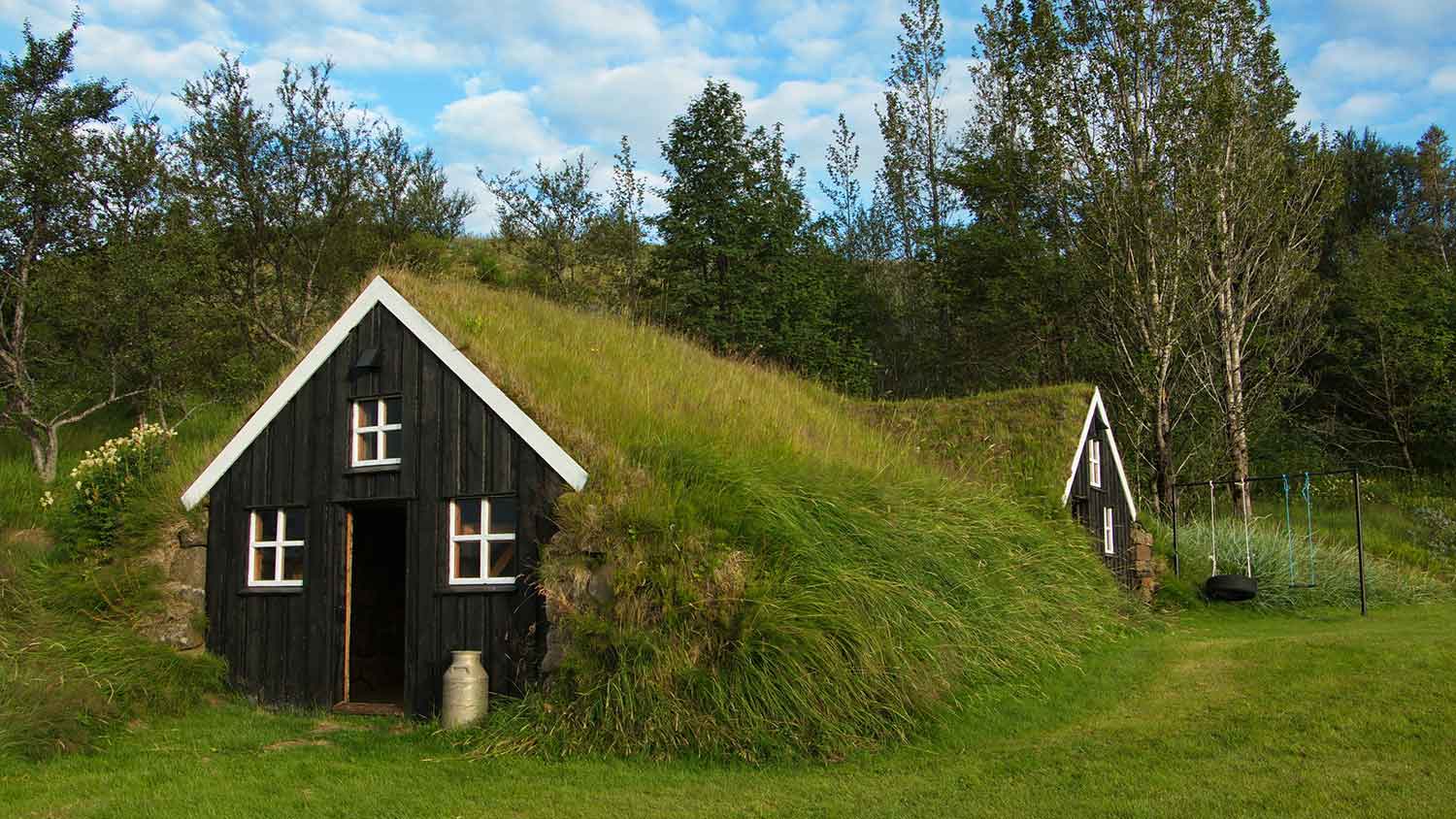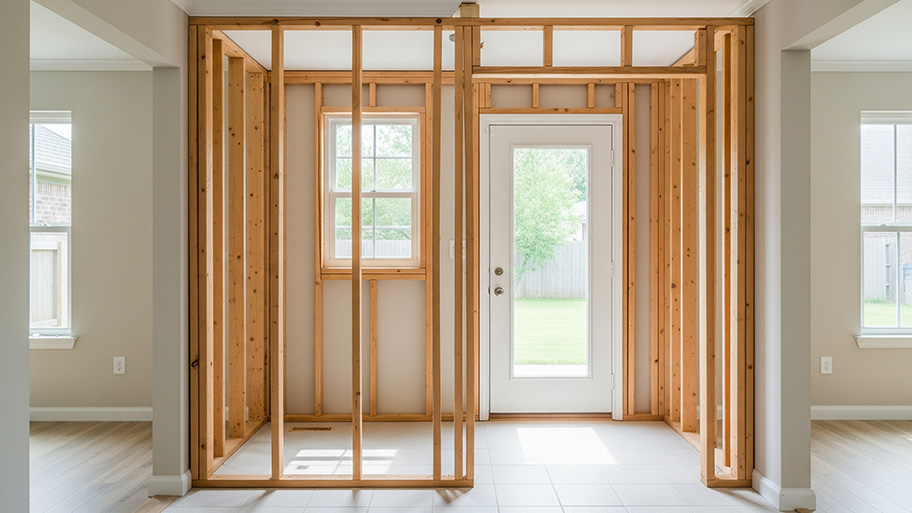
Brick walls can add character and elegance to interior and exterior spaces. Use this brick wall cost guide to see the price range for adding one to your home.
Don’t build from the ground up—build with the ground


Structures that use organic building materials, such as soil, clay, and sand
Excellent thermal regulators that help reduce utility use
Earth home construction may cost 20% more than a traditional build
Earth homes may look like they are from the distant future, but in fact, they have been around for many years, as Indigenous peoples around the globe have built structures from organic materials for as long as written history has existed. The revived interest in earth houses stems from the global movement towards more sustainable living—a lifestyle shift that aims to reduce homes' footprints and help homeowners save money on energy use and costs. If you’re looking for ways to live closer to nature, read on to learn about the history of earth houses and their features.
An earth house is a structure built from organic materials, such as soil, clay, sand, or straw. These kinds of materials have been utilized for hundreds, if not thousands, of years. For example, Huaca del Sol in Peru is an adobe structure that dates back to 450 C.E., constructed in the Moche civilization, which predates the Incas.
Swiss architect Peter Vetsch popularized the modern earth house by building over 70 of them in the 1970s. The Vetsch earth homes utilized a thick layer of soil, as well as a metal mesh frame, shotcrete, and foam insulation. The homes were built into the land in such a way that they almost appeared to be entirely underground, and in fact, the entrances were often concealed and led to the basement of the home.
While there is a seemingly endless variety of earth houses and organic materials, these are the most common styles. Many can be smaller structures, like tiny houses, but they are not limited in size.

As evidenced by the description of Huaca del Sol, adobe is one of the earliest forms of building materials, dating back to at least 8300 B.C., the timestamp of the oldest known adobe structure. Outside of South America, adobe homes can typically be found in the United States throughout the Southwest, specifically in New Mexico. A house in Santa Fe, the De Vargas Street House, is considered one of the oldest homes in the country. The adobe color is a natural match to the striking desert landscapes of New Mexico, Arizona, and Nevada, but it also serves a very functional purpose. Adobe is an excellent insulator, keeping heat in during the winter and out during the warm summer months.
Cob consists of clay, sand, and straw that have been mixed with water to create a strong building material. It’s another old technique without a known origin, though some suspect it originated in England, where there are hundreds of examples. Without any use of bricks, cement, or forms, cob homes mimic natural shapes and curves. They are excellent thermal regulators like adobe homes—keeping cool in summer and retaining heat in winter.
A rammed earth wall is a mixture of sand, gravel, and silt with low-clay content. The mix is then layered between plywood. Sometimes cement is added. The layering—or ramming—was historically done by hand, but machines now expedite the task. The result is a wonderfully unique, striated wall pattern.

Bermed houses are at least partially below grade, like the Vetsch homes. In an elevational bermed home, one face of the home is exposed while all the other sides and often the roof are covered with earth and greenery to insulate and protect the structure. The exposed side typically features large windows to allow sun inside. However, the penetrational bermed design has soil and greenery covering all sides of the home, except where windows and doors exist, allowing for more opportunities for natural light to enter the structure. The house is built on the ground, and soil is bermed around and on top.
The name says it all: earthbag houses use bags filled with dirt stacked on top of each other to form a structure. The bags, sometimes tubes, are made from polypropylene. The bags can be encased in concrete, which helps create a stable structure that can withstand earthquakes and other disasters. The original idea for earthbag homes came from Iranian architect Nader Khalili in the 1970s when he was looking for a method of building houses quickly and inexpensively.
Before digging, consider the following main pros and cons of building a home from dirt.
As noted in the descriptions of some earth home styles, they are excellent thermal regulators, helping to keep the interior cool during heatwaves and warm during frosty evenings. Given this, many homeowners in earth houses can save a fair amount on energy bills.
These organic structures are, of course, much better for the environment than other building materials as there is very little manufacturing involved in their construction. If you are concerned about the environmental impact of building a new home, an earth house is an excellent option to consider.
If you are concerned about VOCs and other building materials, an earth house offers an alternative as the green building materials are primarily organic rather than manufactured.
Some earth house designs may experience ventilation challenges, which could be an issue in a humid environment. Humidity and its higher moisture levels can lead to mold or mildew problems.
Because of the organic materials used in building earth houses, the shape they take is often curved and rounded rather than angular and boxy, like traditional houses. The curved walls could pose some logistical hurdles when installing flooring, cabinets, built-ins, or other finishing touches.
Earth homes can cost about 20% more to build than traditional homes and require extra care to prevent moisture and humidity concerns. In addition, they might be more challenging to sell, as not everyone is committed to this unique design.
From average costs to expert advice, get all the answers you need to get your job done.

Brick walls can add character and elegance to interior and exterior spaces. Use this brick wall cost guide to see the price range for adding one to your home.

Sometimes, all your home needs is a new wall to make a room or provide an updated function to an existing space. Learn how much it costs to install a new wall.

Building permits are essential. Here’s everything you need to know about building permit costs to budget accordingly for your building project.

How much lumber you need for framing depends on several measurements. Use this calculator to estimate how to calculate lumber for framing.

Medium-density fiberboard is a commonly used material for various carpentry projects. Learn more about medium-density fiberboard costs for projects and more.

House construction is a lengthy and expensive project. Learn how to hire a contractor to build a house so they can take on the physical and mental load for you.